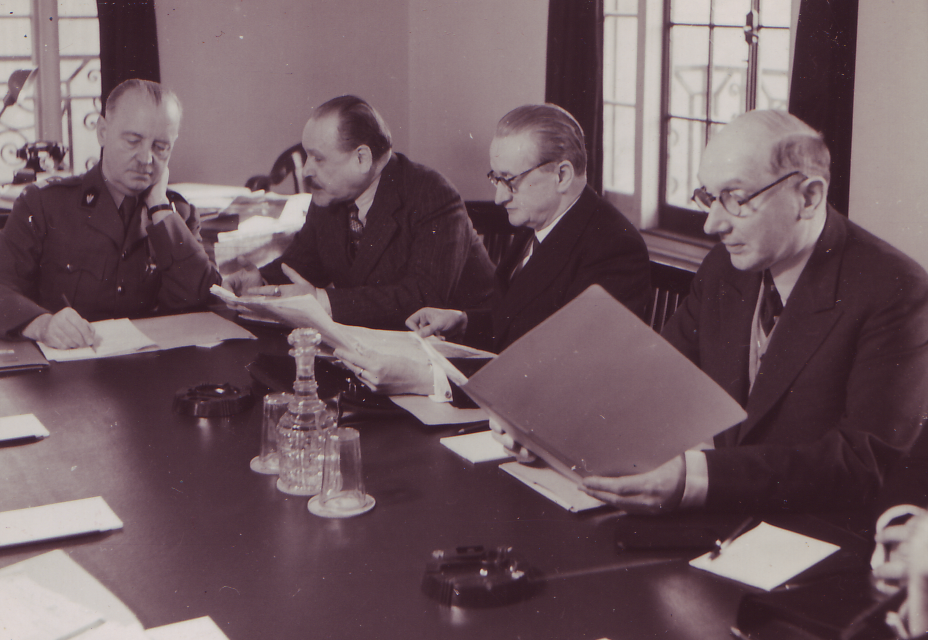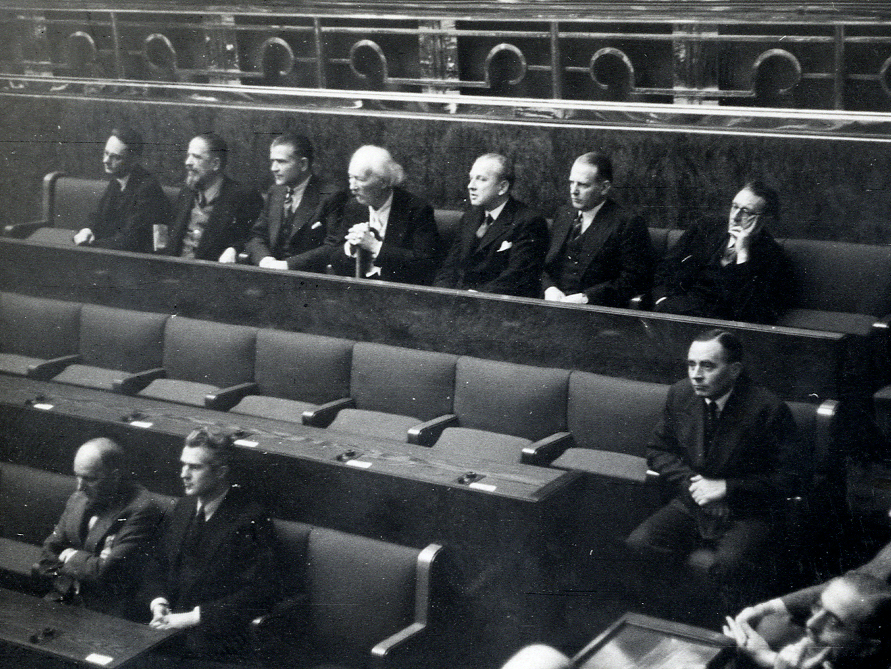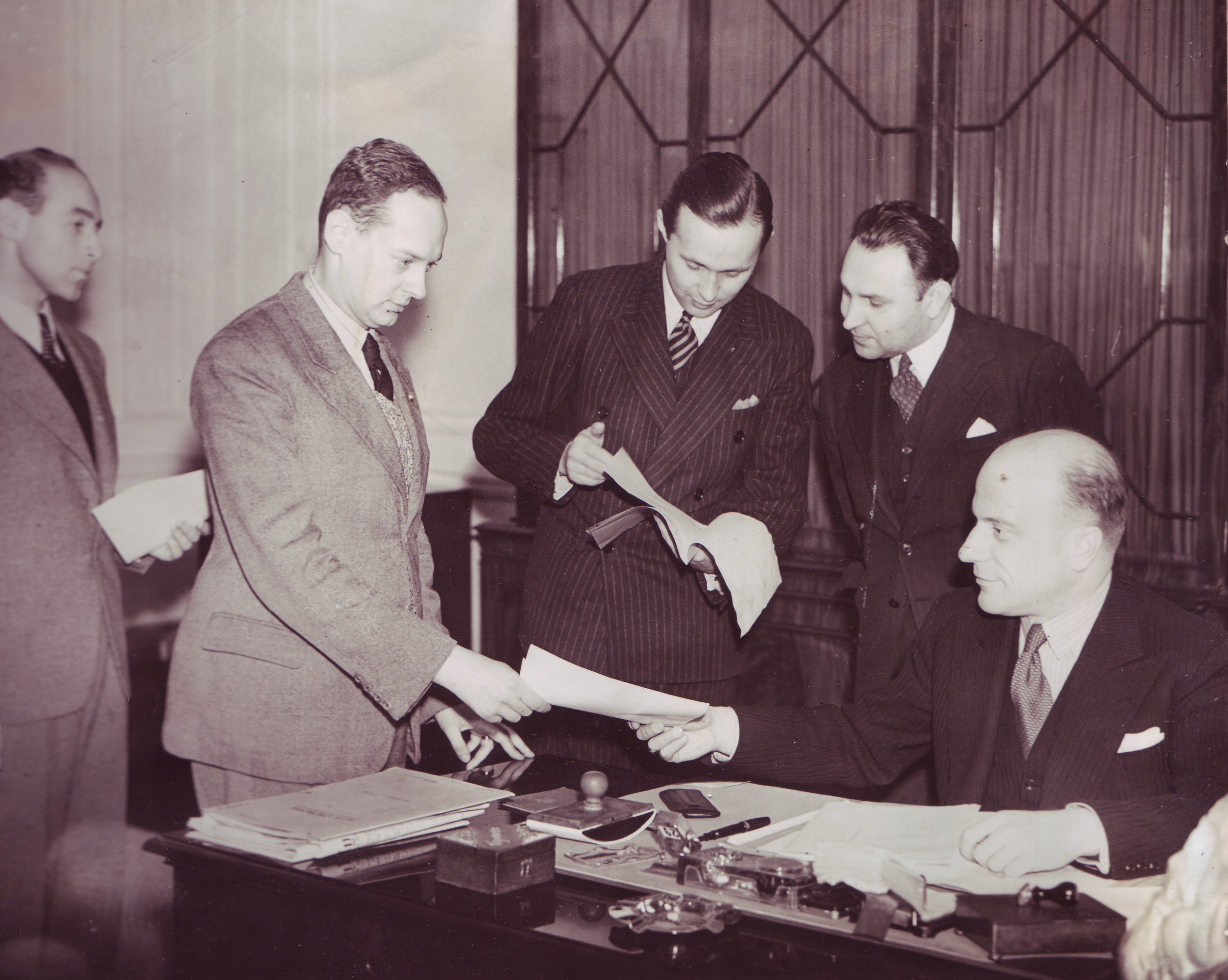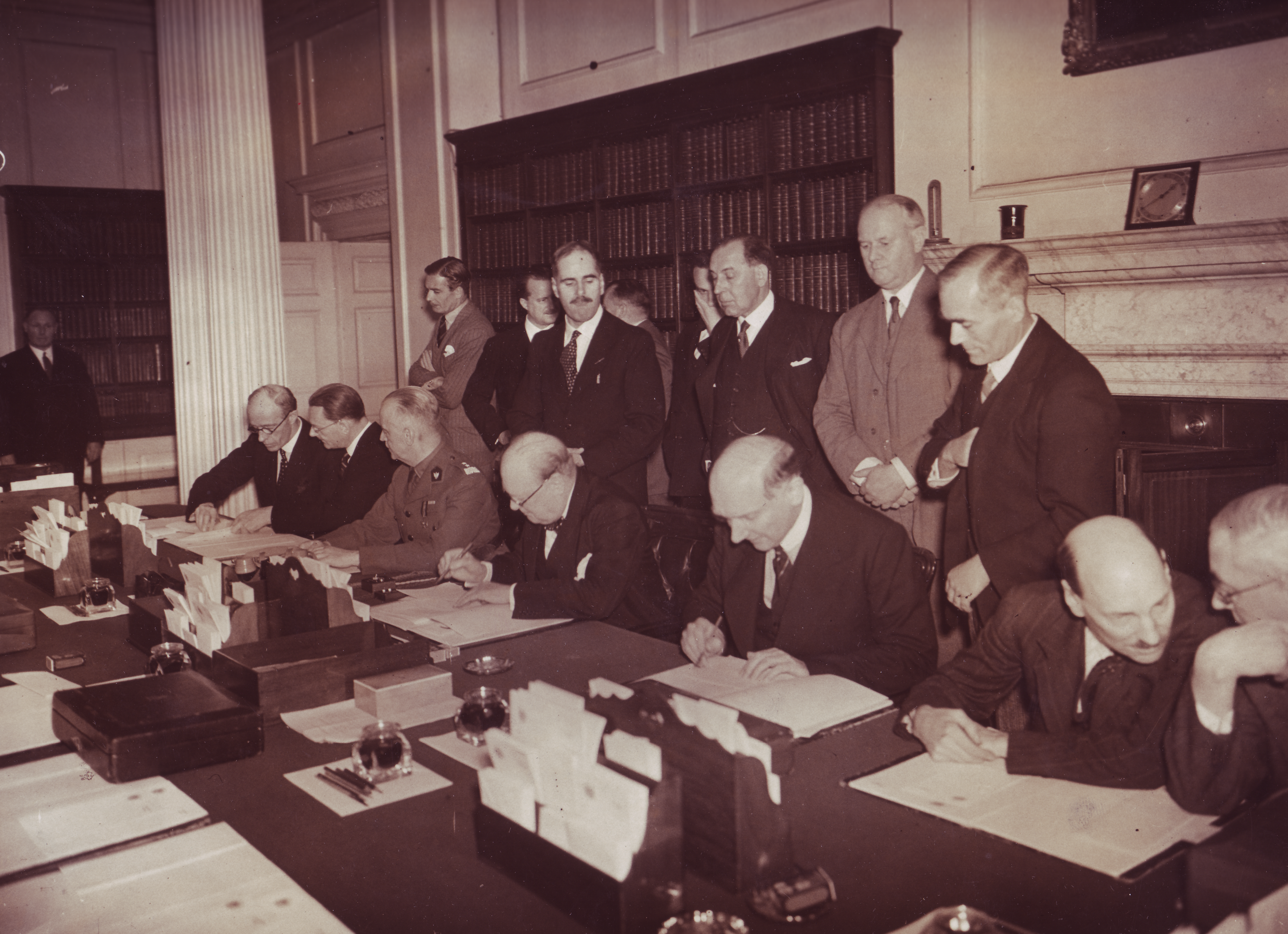Diplomacy in Times of War (Part 2)
08.05.2020
The “Diplomacy in Times of War” series is a cyclical publication of short historical notes presenting little-known details about the activities of Polish diplomats during World War II. The short texts are accompanied by rare photos and documents from Polish and foreign archives.

The New Ministry of Foreign Affairs
August Zaleski took over the Ministry of Foreign Affairs in the government formed by General Władysław Sikorski in Paris on 1 October 1939. The new Minister of Foreign Affairs was well-known in the world of diplomacy. Before the war, he headed the Polish diplomatic missions in Switzerland, Greece and Italy, and in 1926-32 he headed the Ministry of Foreign Affairs in eleven consecutive Polish governments. He remained Foreign Minister in the Sikorski government until July 1941, when he handed in his resignation in protest against the provisions of the Sikorski-Mayski Agreement and the process of its negotiation, including the marginalization of the Foreign Ministry’s role.
Organizing the work of the Ministry was not a simple task. After the formation of General Sikorski's government, the Foreign Ministry was in Paris for nearly two months. Overcrowded rooms of the facility also served other government authorities at that time. The situation improved slightly when on 22 November 1939, the Ministry moved with the whole government to the city of Angers, about 300 km southeast of Paris. The French authorities had designated this location because of its remoteness from the German border and the historical relationship between Anjou and the history of Poland. The stabilization lasted only seven months. After the Third Reich's invasion of France and the rapid progress of the German offensive, the Polish government, following the recommendation of the French authorities, moved to Libourne near Bordeaux and the Atlantic coast on 14 June. After a short stay in the city, a group of most important politicians, including the President of the Republic of Poland Władysław Raczkiewicz and members of the government with Minister Zaleski were evacuated to London on board of the British cruiser HMS "Arethusa".
The situation of refugees in Romania and Hungary
During the war efforts in September 1939, about 20,000 Polish civilians crossed the Polish-Romanian border. The Consulate of the Republic of Poland in Chernivtsi became the first point of basic assistance for a significant number of refugees. Evacuated government officials also headed here. One of the main tasks of Polish diplomatic posts in Romania (which apart from the abovementioned consulate included also the Embassy of the Republic of Poland in Bucharest) was to issue identity documents to refugees and to provide them, if possible, with modest financial assistance.
About 30,000 soldiers of the Polish Army also reached Romania, including more than 3,600 officers. They were imprisoned by the authorities in dozens of internment camps. The soldiers were looked after by the Embassy of the Republic of Poland and by Mirosław Arciszewski, a delegate of the Polish government for refugees.
After the end of Poland’s defensive war September, a significant group of civilians and military personnel, numbering about 100,000-140,000 people, found themselves also in Hungary. Local authorities, generally friendly to refugees, organized 105 internment camps for them. Thanks to the Legation of the Republic of Poland in Budapest, most of the detained Poles could leave the place of forced stay. The Hungarian government silently tolerated the mass movement of interned people abroad. In autumn of 1939 and spring of 1940, the Polish mission managed to organize the evacuation of approximately 21,000 military personnel and 6,000 civilians to France. The aid operation in Romania and Hungary continued until Polish institutions in both countries were forcefully to liquidated by the Germans in 1940 and 1941.
The last session of the League of Nations
The collective security system formed as a result of the First World War proved to be ineffective and short-lived. The efforts of the League of Nations, formed in 1920 on the initiative of US President Woodrow Wilson, did not prevent a new conflict in 1939. The last, extraordinary session of the League Assembly, which took place in Geneva in December 1939, was also attended by the Polish delegation. The subject of the meeting was the situation arising in connection with the USSR's attack on Finland. In view of the fact that the League Assembly had not previously discussed the German aggression against Poland, the December session could have been the first opportunity for the government of General Sikorski to present its position on this matter at the League of Nations forum. Unfortunately, the cautious attitude of Western powers and the fearful policy of the Swiss authorities prevented Poland from formulating clear accusations against the Third Reich. In this situation, the head of the Polish delegation, Deputy Minister of Foreign Affairs Zygmunt Graliński, gave a speech on 14 December in which he omitted the Polish-German issue, focusing on the general condemnation of all aggressive wars and expressing solidarity with the attacked Finns. His intentions were noted, however, and the speech was widely understood. The session was attended by aged Ignacy Jan Paderewski, who had come Geneva specifically for this purpose and who symbolized for the international public opinion the relentless struggle for Poland's independence since the beginning of the 20th century.
During the December meeting, the League Assembly decided to exclude the USSR from the membership in the League, which did not, however, in the least affect the course of the Second World War.
To arms!
One of the fundamental tasks of General Sikorski's government in France was the creation of the Polish Army. The Ministry of Foreign Affairs and Polish diplomatic and consular missions played a key role in these activities. The Polish authorities estimated that human resources that could be taken into account in the process of forming the units should range from 165,000 to 185,000 people. Initially about half a million Polish emigrants in France were counted. The recruitment was led by the Consul General in Lille, Aleksander Kawałkowski, who took over the position of the head of the Central Recruitment Office. By June 1940, 124,000 men stood in conscript commissions, 103,000 were found capable of carrying weapons.
Recruitment also continued after the fall of France, after the Polish authorities moved to London. Considering the possibility of new recruitment, the Polish government initiated talks with the United States administration and Canadian authorities. However, the main source of recruitment remained the Polish emigrants in Great Britain and, to a much lesser extent, volunteer recruits in South American countries. Consul General of the Republic of Poland, Karol Poznański, headed the Consular Conscript Commission operating at the headquarters of the Embassy of the Republic of Poland in London. During the entire war period, it considered the applications of more than 45,000 people, both Polish citizens and foreigners, including 761 women – candidates for the Volunteer Women's Service.
Britain’s only ally
After the fall of France in 1940, Poland was essentially Britain’s only ally with any real armed forces at its disposal. The Dutch and Norwegian armies had already capitulated and units of the Free French Forces had only started to organize. In the meantime, standing ready to face the Germans were Polish airmen, seamen and some land forces, all numbering approximately 27,000 soldiers and officers who had been evacuated to the British Isles and Palestine.
Under these circumstances it was imperative to set the rules of the Anglo-Polish military alliance. On 5 August 1940, the Prime Ministers and Foreign Secretaries of both countries signed an agreement in 10 Downing Street whereby “the Polish Armed Forces shall form the army of the sovereign Republic of Poland”. The Polish military units were to retain the national structure, emblems, ranks and command. For political purposes and to boost morale, the signing of the agreement was accompanied by much pomp and “ceremonial aspects unseen in these situations”, as recounted the memoires of Ambassador Edward Raczyński, who had attended the negotiations. Present to witness the signing ceremony was a large part of Winston Churchill’s cabinet, with Foreign Secretary Lord Halifax and Secretaries for War, Air, Home Office and the Dominions.
Author: Ambassador Marek Pernal.



